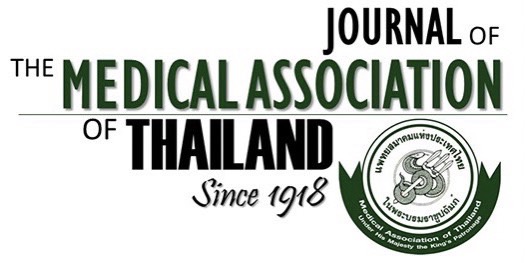MRI of Multiple Sclerosis in Thai Patients
Orasa Chawalparit MD*, Naraporn Prayoonwiwat MD**
Affiliation : * Department of Radiology, Faculty of Medicine, Siriraj Hospital, Mahidol University ** Department of Medicine, Faculty of Medicine, Siriraj Hospital, Mahidol University
Objective : Evaluate the MRI findings of multiple sclerosis (MS) in Thai patients and compare these with the
McDonald criteria for dissemination in space.
Materials and Methods : A retrospective study was performed by reviewing clinical and MRI records of patients
attending MS clinic at Siriraj Hospital. Only patients with complete clinical and MRI data were included in
the present study.
Results : There were 25 patients included in the study. Twenty-four patients were females and 1 was male. The
mean age was 35.24 years old (range 16-50). The disease duration was 1 month to 17 years after the onset.
Twenty-three patients were diagnosed as relapsing-remitting MS, one as possible MS and one as clinical
isolated syndrome. Analysis for CSF oligoclonal bands was performed in 22 cases with positive results in
6 cases (27.3%). The sites of involvement were optic neuritis (16 cases), spinal cord (14 cases), and brain
(9 cases). Seventeen cases had MRI study at the early presentations, and 8 cases during subsequent relapses.
In the 9 cases with brain symptoms, all had positive brain MRI. Ten cases (58.8%) had infratentorial lesions
mostly found at the medulla. Most T2 lesions were found at juxtacortical and periventricular regions. Five in
9 cases (55.6%) with periventricular lesions had lesions not less than 3 mm and at least 3 lesions were found.
There were 6 cases (35.3%) with, at least, nine T2 lesions. Most of the T2 lesions were oval shaped. Seven cases
(41.2%) had black hole lesions. Three cases (17.6%) had gadolinium enhanced lesions. Thirteen of 15
available spinal MRI were abnormal. The locations of the lesions were cervical (6), thoracic (4) and
cervicothoracic (3) levels. The number of T2 lesions was one in 8 cases and more than one in 5 cases. The
length of each lesion varied: less than 1 vertebral segment (5 cases) and 2 or more vertebral segments (8
cases). Swelling of the cord was found in 3 cases and atrophy in 7 cases. The lesions occupied the whole cross-
sectional cord in 6 cases and center of the cord in 7 cases. The gadolinium enhancement was found in 6 cases
with a patchy pattern in 5 cases and mixed ring and patchy patterns in 1 case. There were totally 6 cases
(24%) that fulfilled the McDonald MRI criteria for dissemination in space.
Conclusion : The MRI findings in Thai MS have distinct features from the Western reports. Re-evaluation of
McDonald criteria for the Eastern countries is needed.
Keywords : Multiple sclerosis, Diagnosis, MRI



